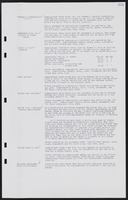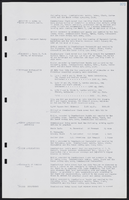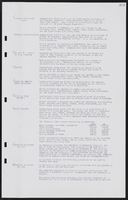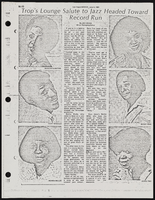Search the Special Collections and Archives Portal
Search Results
Broudy, Pat, 1923-2017
Radiation survivors advocate "Pat" Broudy was born Alice Patricia Sutton in Overland, Kansas in 1923 at the home of her grandparents. She spent her formative years in Kansas City, Missouri. In 1948, she ventured with friends to San Francisco, California where she met Marine Major Charles A. Broudy. Major Broudy was attending radiological school there. After a whirlwind courtship they were married in 1949. Major Broudy had already served in WWII as a pilot in the Pacific theater.
Person
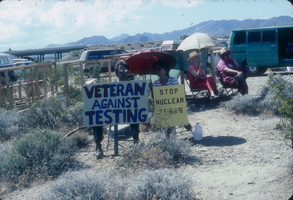
Slide of protesters with signs at a demonstration held on Mother's Day near the Nevada Test Site, May 10, 1987
Date
Archival Collection
Description
Image
Howard Cannon Papers
Identifier
Abstract
The Howard Cannon Papers (1958-1988) contain the personal, administrative, and legislative papers of Howard W. Cannon, U.S. Senator from Nevada between 1959 to 1983. The collection primarily pertains to Cannon's time in office from the 86th Congress in 1959 to the 97th Congress in 1983. Materials include correspondence, speech transcripts and supporting research material, press releases, reports, memoranda, newspaper and magazine clippings, and Senate voting records. The collection also includes constituent correspondence and casework related to legislative issues such as foreign relations, social security, veterans, tax reform, labor, aviation, nuclear testing and waste, civil rights, and environmental protection.
For a detailed inventory, please contact Special Collections and Archives (special.collections@unlv.edu).
Archival Collection

Blood, Leonard T., 1894-1962
District Deputy Labor Commissioner Leonard Blood worked for the Las Vegas Labor Commission, hiring employees for the construction of the Boulder (later renamed Hoover) Dam from 1931 to 1938 in Nevada. Blood, born on November 7, 1894, came to Nevada from Lincoln, Nebraska with his parents, William Blood, a train conductor and his mother, Carrie Blood, a nurse. During Blood's time as the District Deputy Labor Commissioner, it was his responsibility to hire employees for the construction of the Boulder Dam.
Person
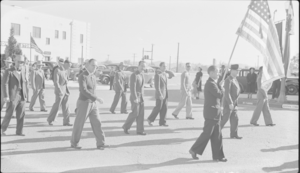
Film transparency of Armistice Day parade, Boulder City, Nevada, circa November 1939
Date
Archival Collection
Description
Image

